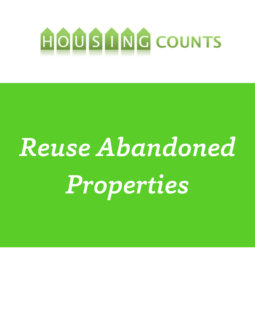Support the Reuse of Abandoned, Vacant, & Delinquent Properties
This set of policies helps communities to provide housing choices by bringing disinvested properties back into productive use. The properties that are the subject of these policies generally fall into one or more of the following categories:
- Abandoned: Owners are no longer maintaining the properties
- Vacant: No legal occupants, although they may provide shelter for squatters or criminal activity
- Tax-delinquent: Property taxes and/or municipal bills are severely past due
These properties can be both a sign of neighborhood decline and a cause of further decline, creating a cycle of disinvestment and instability. By implementing policies to re-use the properties as part of a neighborhood redevelopment strategy, communities can stimulate a cycle of re-investment. The ultimate goal is to foster the growth of safe, welcoming and thriving communities. By allocating at least some redeveloped sites for new housing choices, the public can ensure that community members of lower and moderate incomes will be able to stay in the area even if property values and home prices rise dramatically as the neighborhood improves. At the same time, new residents can be attracted to move into the area, strengthening the community’s vitality.
What types of tools help communities to facilitate the use of disinvested properties?
Reusing disinvested properties generally involves breaking through administrative challenges that can otherwise hinder redevelopment. These legal challenges may include lengthy and complicated tax foreclosure processes, laws that may make it difficult to reuse properties for affordable housing. Even when these questions are settled there can be issues with a lack of authority and capacity to take a coordinated and strategic approach to land acquisition and disposition.Communities have overcome these challenges through tax foreclosure reforms, land banks, and shared databases of abandonment indicators. By streamlining the procedures for acquiring and disposing of disinvested properties in a strategic manner that is consistent with local priorities, communities can help alleviate blight, stem neighborhood decline, and expand the availability of quality, affordable homes.
Where are these policies most applicable?
Communities most commonly employ these policies in areas with weak housing markets, visible neglect, or blight caused by abandoned, vacant, foreclosed, or tax-delinquent properties. Even in stronger housing markets, however, there may be neighborhoods in which these policies may be useful. Even if there aren’t whole neighborhoods that are suitable there are usually scattered tax foreclosures or abandoned properties that could be utilized for affordable homes. Tools are available for both state and local governments.
Where have abandoned or vacant properties been reused?
